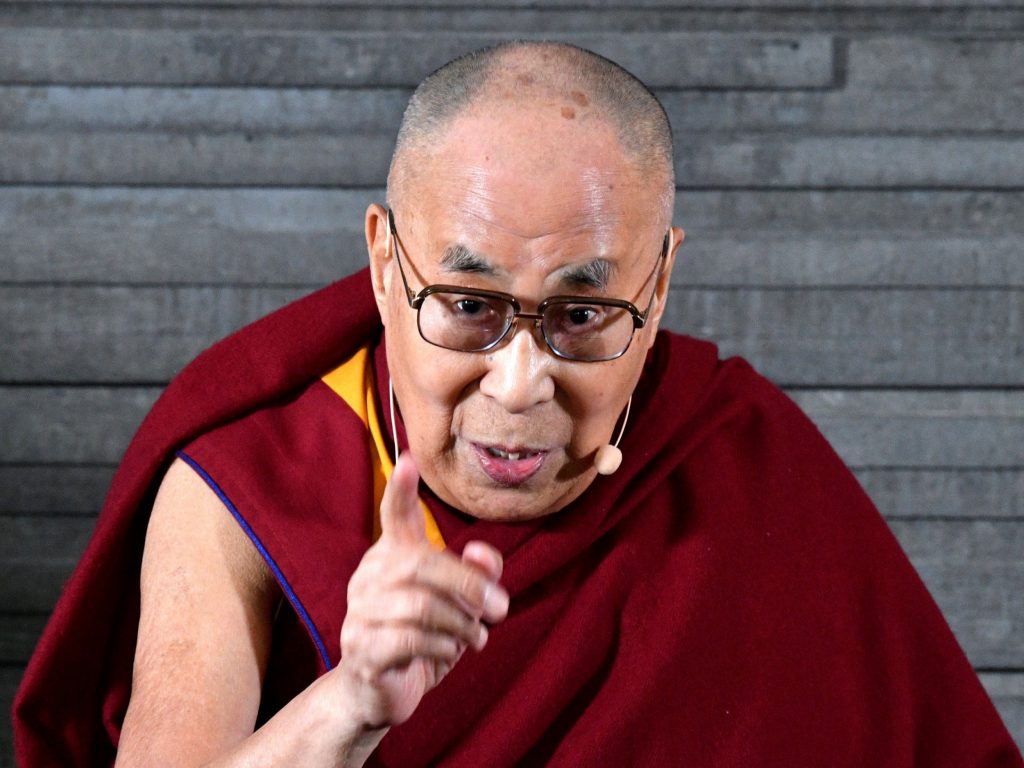Beijing: China Friday asserted that any successor to 88-year-old Dalai Lama should be from within the country and his heir needs to have its approval, as it projected the strategically-located Tibet region as the gateway to South Asia by highlighting the infrastructure development close to the Indian border.
All “reincarnated Tibetan living Buddhas, including Dalai Lamas and Panchen Rinpoches, must be looked for within the country, decided through the practice of lot-drawing from the golden urn, and receive approval from the central government,” a white paper unveiled here by the Chinese government said.
China, which refers to Tibet as Xizang, is increasingly anxious as the octogenarian Dalai Lama, who lives in exile in Dharamsala in India, will take the lead in appointing his successor, which could have a profound spiritual impact in the Himalayan region as his legacy is ingrained in the minds of Tibetan masses.
Though Beijing asserts the Dalai Lama’s successor needs its approval, observers say it remains concerned as the present Panchen Lama, the number two spiritual leader who was appointed by it after unseating the boy nominated by the Dalai Lama, has not gained much traction in Tibet.
The white paper titled “Communist Party of China (CPC) Policies on the Governance of Xizang (Tibet) in the New Era: Approach and Achievements” also highlighted the crackdown to combat separatism in Tibet.
“The fight against infiltration, subversion and secession continues… Xizang, adopts a proactive approach to combat secessionism,” it said.
“The reactionary nature of the Dalai Group has been exposed and denounced, and the regional government relies closely on the people of all ethnicities to resist all forms.
“It is now deeply rooted in the people’s minds across the region that unity and stability are a blessing, while division and unrest lead to disaster. They are ever more determined to safeguard the country’s unity, national sovereignty, and ethnic solidarity,” it said.
China has also expressed its strong opposition to the United States appointing a “Special Coordinator for Tibet Issues” and criticised Washington’s assertion that Beijing should not interfere in the selection of the Dalai Lama’s successor.
On the present Dalai Lama, who is 14th in the long line of succession, China reiterated he is “by no means just a religious figure, but rather a political exile, who has long been engaging in anti-China separatist activities, and attempting to split Tibet from China.” The white paper denies any crackdown on Tibetan Buddhism in Tibet, saying China fully guarantees the freedom of religious belief and promotes Tibetan language along with Mandarin.
“Religious activities are carried out in an orderly manner. The region today hosts over 1,700 sites for Tibetan Buddhism activities, approximately 46,000 Buddhist monks and nuns, four mosques, about 12,000 native Muslims, and one Catholic church with over 700 believers,” the paper said.
It also highlighted infrastructure in Tibet and the border areas in Arunachal Pradesh, which it claims as part of Southern Tibet. China has built high-speed trains in Tibet near the Indian border areas, which enables it to speedily move troops.
“Efforts have been made to develop border areas and improve people’s lives there. Plans and specific programmes for developing villages and towns have been formulated,” the paper said.
It also projected that Tibet is gearing up to become a gateway to South Asia with rail and road connectivity through Nepal.
Tibet is transforming itself into a vital channel for the country’s increasing opening up towards South Asia, it said.
Integrated reform of customs clearance has been launched, and the South Asia Standardisation (Lhasa) Research Centre has been established.
The Gyirong Port, north of Kathmandu, very near to the Nepal border, has been expanded as an international highway port, realising the bilateral opening up of China and Nepal, it said.
On the economic side, the paper said Tibet has achieved an 8.16 per cent annual growth rate with GDP amounting to $29.3 billion in 2022, the highest compared to other Chinese provinces.
The length of the region’s railway network almost doubled during this period and the 5G network has covered all counties and main townships there.
The region has eradicated absolute poverty and the average life expectancy of Tibetans has increased to 72.19 years by 2021, it said.
Wang Gang, deputy head of the Publicity Department of the ruling Communist Party of China Central Committee, told reporters that Tibet has achieved moderate prosperity in all respects.
Tibet’s GDP reached 213.26 billion Yuan (about $29.7 billion) in 2022, which was 2.28 times that in 2012 when calculated at constant prices, Wang said, noting that absolute poverty has been eradicated and common prosperity promoted in this autonomous region.
Meanwhile Xu Zhitao, vice chairman of the Tibetan government, denied allegation of “forced vocational training” in the region, alleged by certain foreign institutions, saying that they are pure vilification.
Xu said the Tibetan provincial government has implemented a proactive employment policy, ensured people’s freedom to choose their own jobs, and boosted the employment of local farmers and herders through multiple channels.
The vocational skills training system serves people above 16 years old who are seeking jobs and vocational training. The training plans take full account of their free choice and needs, said Xu, state-run Xinhua news agency reported.
PTI
